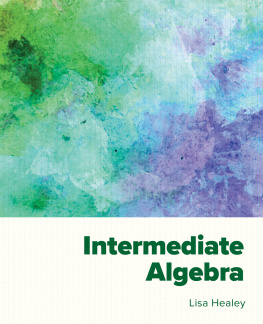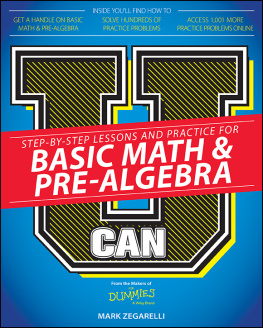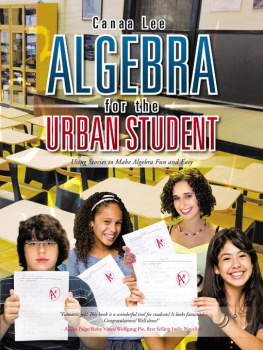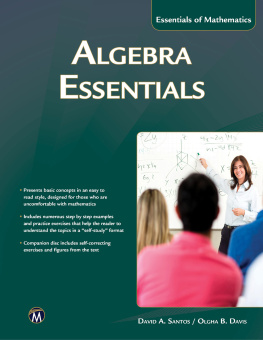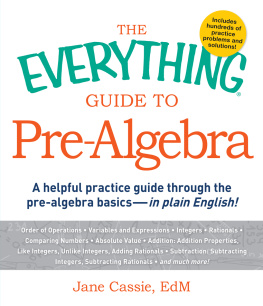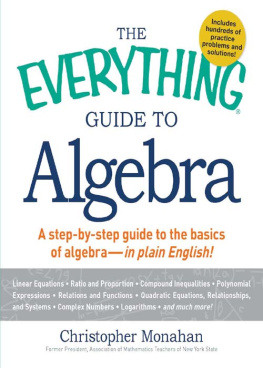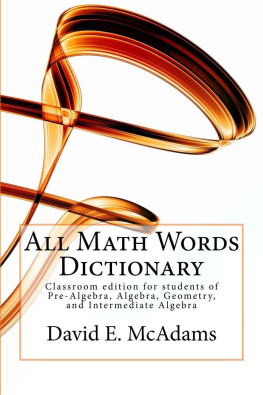Lisa Healey - Intermediate Algebra
Here you can read online Lisa Healey - Intermediate Algebra full text of the book (entire story) in english for free. Download pdf and epub, get meaning, cover and reviews about this ebook. year: 2017, publisher: Chemeketa Press, genre: Children. Description of the work, (preface) as well as reviews are available. Best literature library LitArk.com created for fans of good reading and offers a wide selection of genres:
Romance novel
Science fiction
Adventure
Detective
Science
History
Home and family
Prose
Art
Politics
Computer
Non-fiction
Religion
Business
Children
Humor
Choose a favorite category and find really read worthwhile books. Enjoy immersion in the world of imagination, feel the emotions of the characters or learn something new for yourself, make an fascinating discovery.
- Book:Intermediate Algebra
- Author:
- Publisher:Chemeketa Press
- Genre:
- Year:2017
- Rating:5 / 5
- Favourites:Add to favourites
- Your mark:
- 100
- 1
- 2
- 3
- 4
- 5
Intermediate Algebra: summary, description and annotation
We offer to read an annotation, description, summary or preface (depends on what the author of the book "Intermediate Algebra" wrote himself). If you haven't found the necessary information about the book — write in the comments, we will try to find it.
Intermediate Algebra — read online for free the complete book (whole text) full work
Below is the text of the book, divided by pages. System saving the place of the last page read, allows you to conveniently read the book "Intermediate Algebra" online for free, without having to search again every time where you left off. Put a bookmark, and you can go to the page where you finished reading at any time.
Font size:
Interval:
Bookmark:

Printed in the United States of America.
The dot-com bubble eventually burst. Many companies grew too fast and then suddenly went out of business. The result caused the sharp decline represented on the graph beginning around the year 2000.
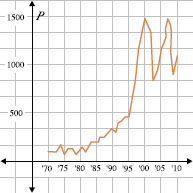
Analyzing this graph allows us to observe the relationship between the stock market average and years in the past. In this chapter, we will explore the nature of the relationship between two quantities.
Reading a Qualitative Graph
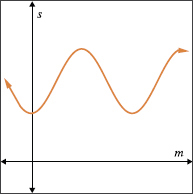
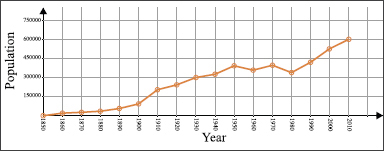

The population of Portland, Oregon (a quantitative graph). What does the qualitative graph tell us about ice cream sales at Joes Caf? Do we know how many servings were sold in June? What does the quantitative graph tell us about the population of Portland, Oregon? What was the population in 1930? Solutions Ice cream sales are lowest at the beginning and at the end of the year and highest during the middle months. We cannot tell from this graph exactly how many servings are sold in any given month. The population of Portland, Oregon, has been increasing since 1850, except for a slight decrease in the 1950s and 1970s. The population in 1930 was about 300,000.
Independent and Dependent Variables
In this example, the quantity of weight change depends on the number of calories consumed, so we call w the dependent variable . Because the number of calories consumed determines or influences the weight change, we call c the independent variable. When creating a qualitative graph that depicts the relationship between two variables, the first step is to determine which of the variables is independent and which is dependent. Lets say we want to depict the relationship between p, the number of bushels of potatoes produced on an acre of farmland, and k, the number of kilograms of fertilizer applied to the acre. We can phrase the relationship two different ways and determine which makes the most sense. We can say, The yield of potatoes depends on the amount of fertilizer, or, The amount of fertilizer depends on the yield of potatoes.
Font size:
Interval:
Bookmark:
Similar books «Intermediate Algebra»
Look at similar books to Intermediate Algebra. We have selected literature similar in name and meaning in the hope of providing readers with more options to find new, interesting, not yet read works.
Discussion, reviews of the book Intermediate Algebra and just readers' own opinions. Leave your comments, write what you think about the work, its meaning or the main characters. Specify what exactly you liked and what you didn't like, and why you think so.

